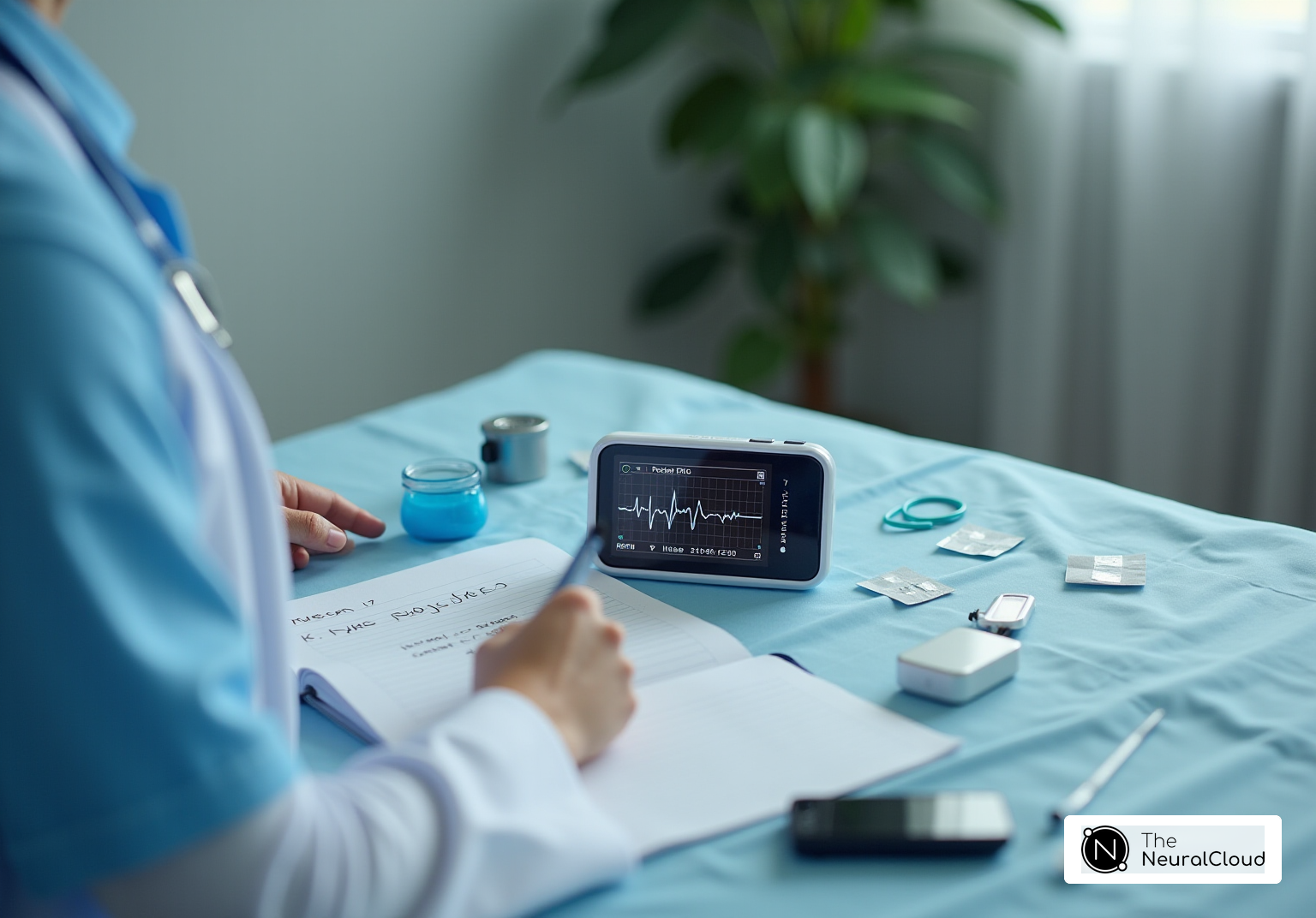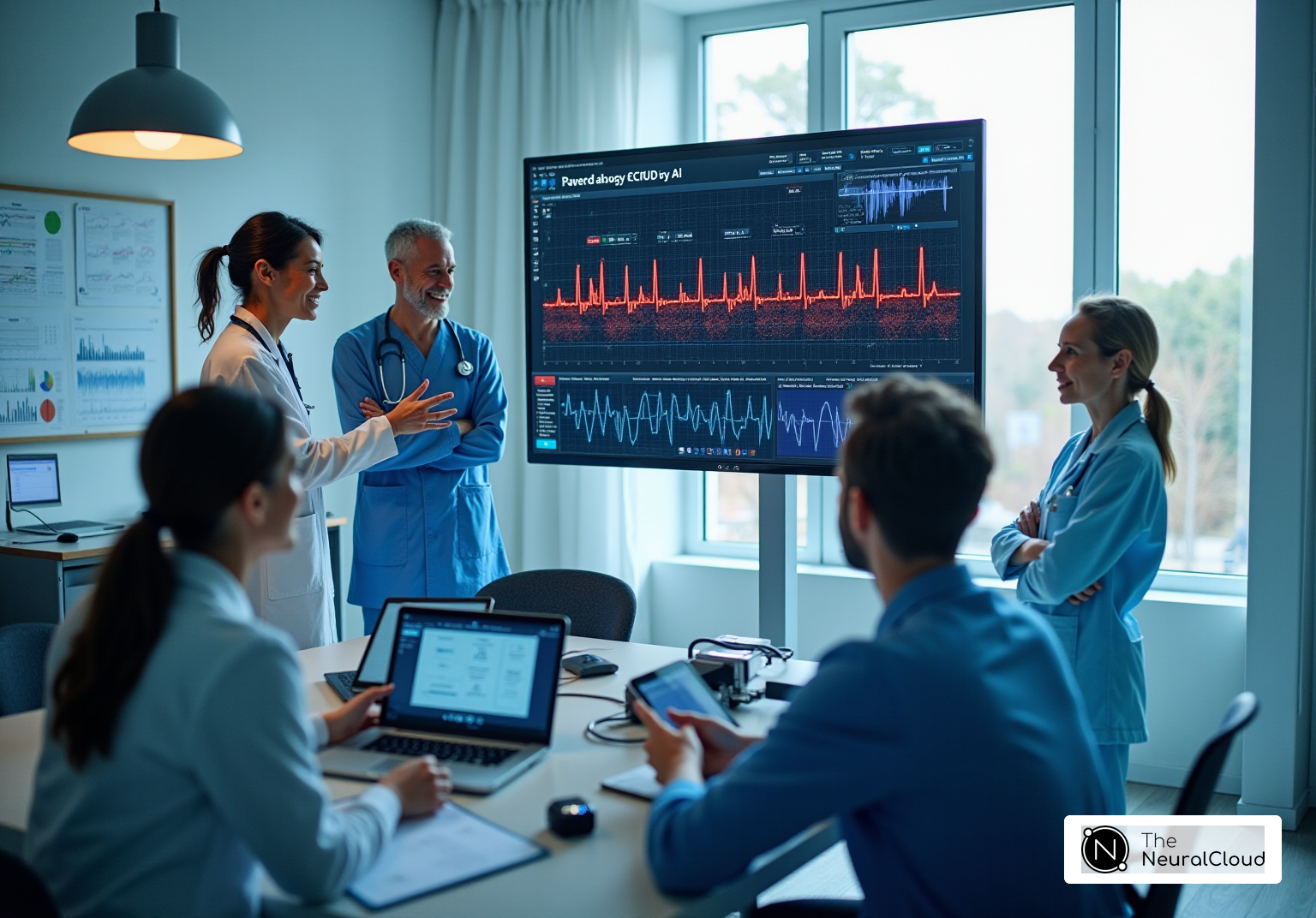Overview
The article highlights the clinical significance of ECG reciprocal changes and the challenges faced in their identification and analysis. Recognizing these changes is vital for diagnosing conditions like STEMI, as they indicate myocardial damage. Advanced technologies, particularly the MaxYield™ platform, play a crucial role in enhancing the accuracy of ECG analysis.
The MaxYield™ platform offers several key features that improve ECG analysis:
- It automates the identification of reciprocal changes, significantly reducing the time healthcare professionals spend on manual analysis.
- Additionally, the platform employs advanced noise reduction techniques, ensuring that the data processed is clear and reliable.
This automation and enhancement of data quality lead to more accurate diagnoses and timely interventions.
The advantages of using the MaxYield™ platform are substantial:
- By streamlining ECG analysis, healthcare professionals can focus more on patient care rather than data interpretation.
- The rapid data processing capabilities of the platform not only improve efficiency but also contribute to better patient outcomes.
Ultimately, the integration of the MaxYield™ platform into clinical practice represents a significant advancement in the field of cardiology.
Introduction
Understanding the complexities of ECG reciprocal changes is crucial for healthcare professionals, as these variations can provide vital insights into myocardial damage. The challenge lies in effectively identifying and interpreting these subtle yet significant alterations in ECG readings to ensure timely interventions. By exploring the mechanisms behind these changes, practitioners can enhance diagnostic accuracy and patient outcomes.
One innovative solution is Neural Cloud Solutions' MaxYield™ platform, which offers advanced tools for ECG analysis. This platform streamlines the process by leveraging cutting-edge technology to improve the detection of reciprocal changes. With features designed to enhance the clarity and precision of ECG readings, healthcare professionals can make more informed decisions.
The advantages of using the MaxYield™ platform are clear: it not only improves diagnostic accuracy but also supports better patient outcomes. By providing a user-friendly interface and robust analytical capabilities, the platform empowers practitioners to act swiftly and effectively. This article will delve into the clinical significance of ECG reciprocal changes and the innovative tools available to facilitate their analysis.
Define ECG Reciprocal Changes and Their Clinical Significance
ECG reciprocal changes refer to variations observed in the electrocardiogram that occur in areas opposite to myocardial damage. Typically, these modifications manifest as ST-segment depression or T-wave inversions in electrodes positioned electrically opposite to the affected region, which are examples of ECG reciprocal changes. Recognizing ECG reciprocal changes is crucial, as they can indicate acute coronary occlusion, particularly in cases of ST-elevation myocardial infarction (STEMI). For instance, ST-segment depression in leads II, III, and aVF may suggest an inferior wall myocardial infarction when ST elevation is noted in leads I and aVL.
Statistics show that 100% of inferior STEMI cases exhibit ECG reciprocal changes, specifically opposite ST-segment depression (RSTD), underscoring its vital role in diagnosis. Additionally, studies reveal that patients exhibiting RSTD often experience a higher incidence of multivessel disease, with 60% of inferior STEMI patients showing ECG reciprocal changes compared to only 20% of those without RSTD. This highlights the necessity for health tech developers to implement robust algorithms capable of identifying ECG reciprocal changes.
Neural Cloud Solutions' MaxYield™ platform significantly enhances this process by automating ECG analysis. It effectively reduces noise and provides detailed insights that facilitate early interventions. MaxYield™ offers beat-by-beat analysis, processing data from 200,000 heartbeats in under 5 minutes, ensuring timely identification of RSTD. By leveraging MaxYield™, developers can improve patient outcomes in ischemic heart conditions.
Furthermore, recognizing RSTD aids in differentiating between STEMI and nonischemic cases, enhancing patient management and treatment strategies. The platform's features include:
- Automated ECG analysis
- Noise reduction for clearer readings
- Rapid processing of extensive data
These advantages empower healthcare professionals to make informed decisions swiftly, ultimately leading to better patient care.

Explore the Mechanisms of Reciprocal Changes in Myocardial Infarction
ECG reciprocal changes arise from mutual variations in ECG readings due to changes in the heart's electrical activity caused by ischemia or infarction. When a myocardial region undergoes ischemia, it produces unique electrical potentials that differ from healthy tissue. This difference often manifests as ST-segment elevation in the affected leads, alongside ST-segment depression in the opposing leads, which may be indicative of ECG reciprocal changes. For instance, in a patient with an inferior wall myocardial infarction (MI), ST elevation may be observed in leads II, III, and aVF, while corresponding changes appear in leads I and aVL.
Understanding these mechanisms is vital for accurate ECG interpretation, particularly in the context of ECG reciprocal changes and prompt clinical decision-making. They offer insights into the extent and severity of myocardial damage. Research indicates that recognizing ECG reciprocal changes and these mutual alterations can significantly enhance diagnostic accuracy, allowing healthcare providers to respond effectively to acute cardiac events.
The MaxYield™ automated ECG analysis platform from Neural Cloud Solutions exemplifies cutting-edge technology in this field. It enhances ECG analysis by mapping signals through noise, isolating, and labeling key features in every heartbeat. This capability supports confident clinical decisions and improves patient outcomes.
The practical implications of MaxYield™ are substantial. Its beat-by-beat analysis and ability to highlight cardiac events directly influence the efficiency and accuracy of ECG interpretation. This underscores the importance of integrating advanced ECG technologies in various healthcare settings to elevate patient care.
Features of MaxYield™:
- Automated ECG signal mapping
- Noise isolation for clearer readings
- Key feature labeling for each heartbeat
Advantages for Healthcare Professionals:
- Enhanced diagnostic precision
- Improved response to acute cardiac incidents
- Support for confident clinical decisions
Incorporating MaxYield™ into clinical practice not only streamlines ECG analysis but also significantly contributes to better patient outcomes.
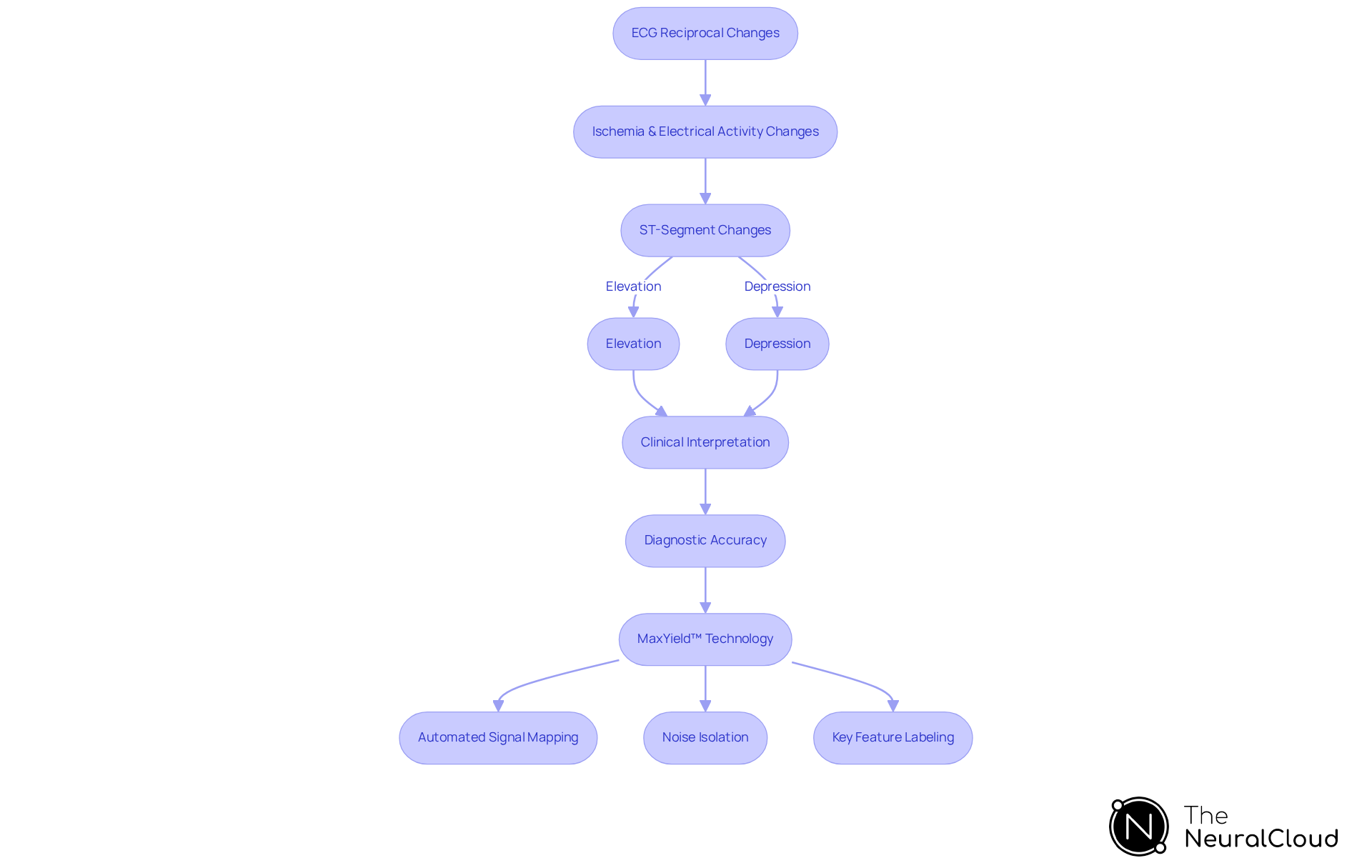
Identify and Interpret Reciprocal Changes on ECGs
To effectively recognize ECG reciprocal changes, practitioners should concentrate on the electrodes that counter the region of suspected infarction. For instance, if ST elevation appears in channels II, III, and aVF, it’s essential to investigate for ECG reciprocal changes, specifically ST depression in channels I and aVL. The following steps outline this process:
- Examine the 12-lead ECG: Begin by identifying any ST elevations in the standard electrodes. MaxYield™ aids in filtering out noise, ensuring clearer visibility of ST elevations.
- Identify opposing connections: Determine which connections are electrically contrary to the affected ones. MaxYield™'s wave recognition features help in accurately identifying these opportunities.
- Evaluate for ST depression: Look for ST segment depression or T-wave inversions in these reciprocal tracings. The platform's noise filtering enhances the detection of subtle variations in these segments.
- Consider clinical context: Correlate findings with patient symptoms and history to confirm the diagnosis.
For example, in a case of anterior wall myocardial infarction (MI), ST elevation in leads V1-V3 may correspond with ST depression in leads II, III, and aVF, which are indicative of ECG reciprocal changes and the need for immediate intervention. This systematic approach not only enhances diagnostic precision but also aligns with the clinical significance of mutual alterations, such as ECG reciprocal changes, which are linked to larger myocardial regions at risk and improved myocardial preservation in STEMI patients. By utilizing MaxYield™, health tech developers can tackle the challenges of physiological variability and signal artifacts, ultimately enhancing the efficiency and effectiveness of ECG analysis.
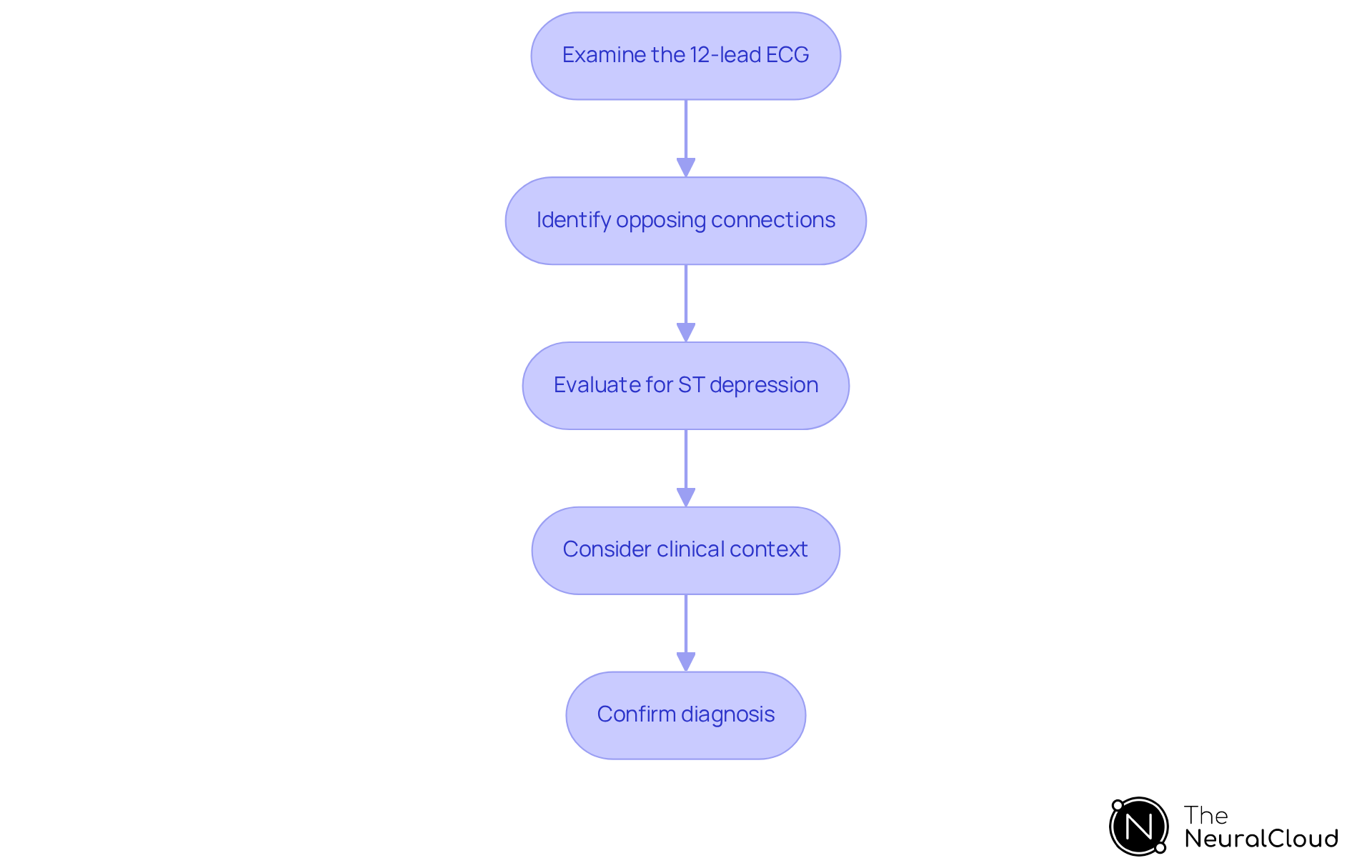
Integrate Advanced Technologies for Enhanced ECG Analysis
Incorporating advanced technologies like AI and machine learning into ECG analysis addresses significant challenges in identifying and interpreting alternating variations. Platforms such as Neural Cloud Solutions' MaxYield™ automate the recognition of these modifications, facilitating swift and accurate analysis of ECG data.
Features of MaxYield™:
- AI Algorithms: These algorithms process vast amounts of ECG data quickly, identifying patterns that may elude human observers. For instance, AI detection of ventricular arrhythmia has achieved an impressive accuracy of 99.2% and a sensitivity of 98.8%.
- Real-time monitoring is achieved through wearable devices equipped with ECG capabilities that continuously monitor heart activity, providing immediate alerts for ECG reciprocal changes. This proactive approach allows for timely interventions, which can be crucial in preventing adverse cardiac events.
- Data Integration: Advanced platforms aggregate data from multiple sources, offering a comprehensive view of a patient's cardiac health. This integration enhances diagnostic accuracy and reduces the likelihood of false positives, thereby improving patient outcomes.
By leveraging these technologies, healthcare professionals can optimize their diagnostic processes. The MaxYield™ platform ensures that critical cardiac insights are captured and acted upon swiftly, ultimately enhancing patient care.
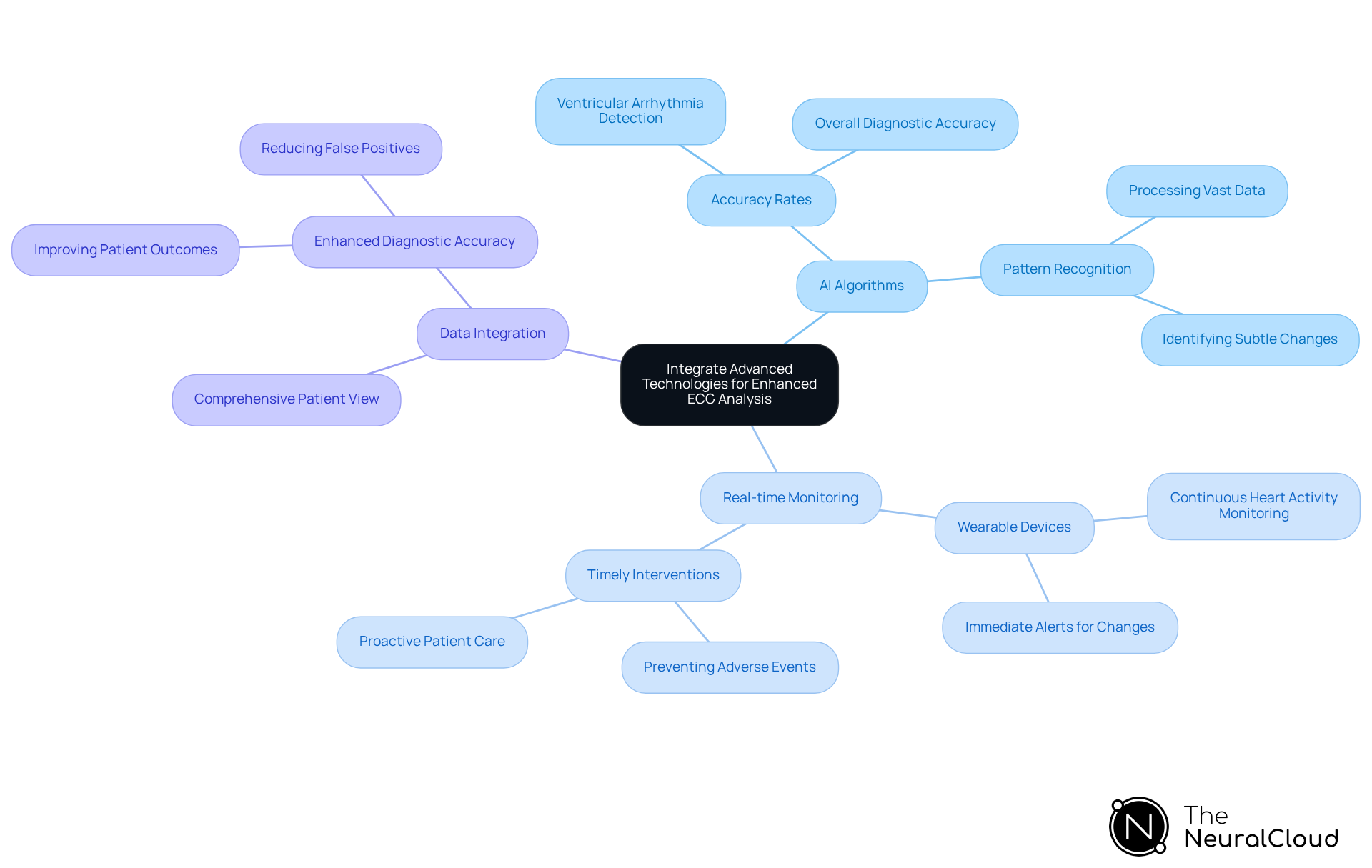
Conclusion
Understanding ECG reciprocal changes is crucial for accurate diagnosis and effective patient management in cases of myocardial infarction. These changes, which appear as variations in the electrocardiogram opposite to areas of myocardial damage, are vital for identifying acute coronary occlusions. Recognizing these changes is significant, as they are associated with higher incidences of multivessel disease and help differentiate between STEMI and nonischemic cases.
The mechanisms behind these reciprocal changes arise from alterations in the heart's electrical activity during ischemia. Advanced technologies, such as Neural Cloud Solutions' MaxYield™ platform, automate ECG analysis, enhancing diagnostic precision and supporting timely clinical decisions. Key features of MaxYield™ include:
- Noise reduction
- Real-time monitoring
Empowering healthcare professionals to respond effectively to acute cardiac events ultimately improves patient outcomes.
Incorporating cutting-edge technologies into ECG analysis is essential for enhancing patient care and safety. As cardiac diagnostics evolve, embracing these innovations is crucial for healthcare providers aiming to optimize their practices and deliver the best possible care. By prioritizing the recognition of ECG reciprocal changes and leveraging advanced analytical tools, the healthcare community can significantly impact patient outcomes and advance the field of cardiology.
Frequently Asked Questions
What are ECG reciprocal changes?
ECG reciprocal changes are variations observed in the electrocardiogram that occur in areas opposite to myocardial damage, typically manifesting as ST-segment depression or T-wave inversions in electrodes positioned electrically opposite to the affected region.
Why is recognizing ECG reciprocal changes important?
Recognizing ECG reciprocal changes is crucial as they can indicate acute coronary occlusion, particularly in cases of ST-elevation myocardial infarction (STEMI). For example, ST-segment depression in certain leads may suggest an inferior wall myocardial infarction when ST elevation is noted in other leads.
What is the significance of ST-segment depression in leads II, III, and aVF?
ST-segment depression in leads II, III, and aVF may suggest an inferior wall myocardial infarction when ST elevation is noted in leads I and aVL, indicating the presence of ECG reciprocal changes.
What percentage of inferior STEMI cases exhibit ECG reciprocal changes?
Statistics show that 100% of inferior STEMI cases exhibit ECG reciprocal changes, specifically opposite ST-segment depression (RSTD).
How does the presence of RSTD relate to multivessel disease?
Patients exhibiting RSTD often experience a higher incidence of multivessel disease, with 60% of inferior STEMI patients showing ECG reciprocal changes compared to only 20% of those without RSTD.
What role does Neural Cloud Solutions' MaxYield™ platform play in ECG analysis?
MaxYield™ enhances ECG analysis by automating the process, effectively reducing noise, and providing detailed insights that facilitate early interventions. It can process data from 200,000 heartbeats in under 5 minutes, ensuring timely identification of RSTD.
What features does the MaxYield™ platform offer?
The MaxYield™ platform offers automated ECG analysis, noise reduction for clearer readings, and rapid processing of extensive data, which helps healthcare professionals make informed decisions swiftly.
How does recognizing RSTD aid in patient management?
Recognizing RSTD aids in differentiating between STEMI and nonischemic cases, enhancing patient management and treatment strategies, ultimately leading to better patient care.

